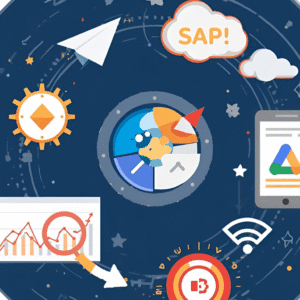In today’s competitive landscape, businesses are constantly seeking ways to stand out and foster lasting relationships with their customers. Generic, one-size-fits-all approaches are becoming increasingly ineffective. Customers expect more; they crave experiences that are tailored to their individual needs and preferences. This is where the power of personalized interactions comes into play. By leveraging customer data and employing strategic personalization techniques, businesses can create meaningful connections, enhance customer satisfaction, and drive significant results.
This comprehensive guide will explore the concept of personalizing interactions, providing practical strategies, real-world examples, and best practices for businesses looking to elevate their customer engagement.
| Understanding the Essence of Personalization |
Personalization, at its core, is about treating each customer as an individual. It involves using the data you have about your customers – their past purchases, browsing behavior, demographics, and stated preferences – to create experiences that are relevant, valuable, and engaging. This goes beyond simply addressing someone by their name in an email. It’s about understanding their needs, anticipating their desires, and delivering content and offers that resonate with them on a personal level.
The shift towards personalization is driven by several factors:
- Increased Customer Expectations: Customers are accustomed to personalized experiences from companies like Amazon and Netflix, setting a high bar for all businesses.
- Data Availability: The explosion of data and advancements in analytics make it easier than ever to gather and analyze customer information.
- Technological Advancements: Marketing automation platforms, CRM systems, and AI-powered tools provide the means to deliver personalized experiences at scale.
- Improved ROI: Personalized marketing efforts consistently outperform generic campaigns, leading to higher conversion rates, increased customer loyalty, and improved revenue.
| The Power of Customer Data: Fueling Personalization Efforts |
Customer data is the lifeblood of any successful personalization strategy. Without accurate and comprehensive data, your efforts will be misguided and ineffective. It’s crucial to collect data from various sources and integrate it into a unified customer view.
Here are some key types of customer data to consider:
- Demographic Data: Age, gender, location, income, education, and occupation. This provides a basic understanding of your customer base.
- Behavioral Data: Website activity, purchase history, app usage, email engagement, and social media interactions. This reveals what customers do and how they interact with your brand.
- Psychographic Data: Interests, values, lifestyle, and attitudes. This offers insights into customers’ motivations and preferences.
- Transactional Data: Purchase amounts, frequency of purchases, products purchased, and payment methods. This provides a detailed record of customer transactions.
- Customer Feedback: Surveys, reviews, testimonials, and customer support interactions. This reveals customers’ opinions, experiences, and pain points.
Once you have collected this data, it’s essential to clean, organize, and analyze it to identify patterns, segments, and individual customer needs. Data analytics tools and CRM systems can be invaluable in this process.
| Practical Strategies for Personalizing Interactions |
Now that we understand the importance of personalization and the role of customer data, let’s delve into some practical strategies for implementing personalized interactions across various touchpoints:
- Personalized Email Marketing:
- Segmentation: Divide your email list into segments based on demographics, behavior, and preferences. Send targeted emails to each segment with relevant content and offers.
- Dynamic Content: Use dynamic content blocks to display different content based on the recipient’s profile. For example, show product recommendations based on past purchases or browsing history.
- Personalized Subject Lines: Craft subject lines that include the recipient’s name or address a specific need or interest. This can significantly increase open rates.
- Behavior-Triggered Emails: Send automated emails based on specific actions, such as abandoned carts, website visits, or form submissions. These emails can offer assistance, provide incentives, or simply remind customers of what they left behind.
- Personalized Website Experiences:
- Website Personalization: Tailor the website content, layout, and navigation based on the visitor’s profile. For example, show different product categories or promotions based on their past purchases or browsing history.
- Personalized Product Recommendations: Suggest products that are relevant to the visitor’s interests and needs. Use algorithms to analyze past purchases, browsing history, and other data points to generate personalized recommendations.
- Dynamic Content on Landing Pages: Customize landing pages based on the source of the traffic. For example, show different content to visitors who arrive from a Google Ads campaign compared to those who arrive from a social media post.
- Personalized Pop-ups and Overlays: Use pop-ups and overlays to offer personalized messages, promotions, or lead capture forms. For example, offer a discount code to first-time visitors or promote a specific product to returning customers.
- Personalized Customer Service:
- Empower Customer Service Representatives: Provide customer service representatives with access to a complete customer view, including past interactions, purchase history, and preferences. This allows them to provide personalized assistance and resolve issues more effectively.
- Personalized Chatbots: Use chatbots to provide personalized support and answer frequently asked questions. Train the chatbot to recognize customer needs and provide relevant information or solutions.
- Proactive Customer Service: Reach out to customers proactively based on their behavior or feedback. For example, offer assistance to customers who are struggling to complete a purchase or follow up with customers who have recently left a negative review.
- Personalized Mobile App Experiences:
- Personalized Push Notifications: Send targeted push notifications based on the user’s location, behavior, and preferences. For example, send a notification about a nearby promotion or remind users to complete a task.
- In-App Personalization: Customize the app’s content, layout, and features based on the user’s profile. For example, show different content to new users compared to experienced users.
- Location-Based Personalization: Use location data to provide personalized recommendations, offers, or services. For example, suggest nearby restaurants or stores based on the user’s current location.
- Personalized Social Media Marketing:
- Targeted Advertising: Use social media advertising platforms to target specific audiences based on demographics, interests, and behavior. This allows you to show relevant ads to the right people.
- Personalized Content: Create content that is tailored to the interests and needs of your target audience. Use social listening tools to identify trending topics and conversations and create content that addresses those topics.
- Personalized Interactions: Respond to comments and messages on social media in a personalized and timely manner. Show that you are listening to your customers and value their feedback.
| Real-World Examples of Personalization in Action |
To illustrate the impact of personalization, let’s look at some real-world examples:
- Amazon: Amazon uses a vast amount of data to personalize the shopping experience for each customer. They provide personalized product recommendations, customized search results, and tailored email marketing campaigns. This has contributed significantly to their success as the world’s leading online retailer.
- Netflix: Netflix uses data to personalize the movie and TV show recommendations that each user sees. They analyze viewing history, ratings, and other data points to suggest content that is likely to be of interest. This has helped them to retain subscribers and attract new ones.
- Spotify: Spotify uses data to personalize the music listening experience for each user. They create personalized playlists, recommend new artists, and tailor the radio stations to the user’s taste. This has helped them to become the leading music streaming service.
- Starbucks: Starbucks uses their mobile app to personalize the customer experience. They offer personalized rewards, send targeted promotions, and allow customers to customize their orders in advance. This has helped them to build customer loyalty and increase sales.
| Best Practices for Implementing Personalization |
Implementing a successful personalization strategy requires careful planning and execution. Here are some best practices to keep in mind:
- Start Small and Iterate: Don’t try to personalize everything at once. Start with a few key areas and gradually expand your efforts as you learn what works best.
- Focus on Value: Make sure that your personalization efforts provide genuine value to your customers. Don’t just personalize for the sake of personalizing; ensure that it enhances their experience.
- Be Transparent: Be upfront with your customers about how you are using their data. Provide them with control over their data and allow them to opt-out of personalization if they choose.
- Protect Customer Privacy: Implement robust security measures to protect customer data from unauthorized access or misuse. Comply with all relevant data privacy regulations.
- Test and Measure: Continuously test and measure the effectiveness of your personalization efforts. Use A/B testing and other methods to identify what is working and what is not.
- Integrate Your Systems: Integrate your CRM, marketing automation, and other systems to create a unified customer view. This will enable you to deliver more consistent and personalized experiences across all touchpoints.
- Train Your Team: Ensure that your team understands the principles of personalization and how to use the tools and technologies that you have implemented.
- Respect Customer Preferences: Allow customers to easily manage their preferences and opt-out of specific types of personalization. Honor their choices and avoid bombarding them with unwanted communications.
- Avoid Being Creepy: There’s a fine line between personalization and being intrusive. Avoid using data in ways that feel creepy or stalkerish. For example, don’t mention information that a customer has only shared in a private conversation.
- Continuously Optimize: Personalization is an ongoing process. Continuously monitor your results, gather feedback, and optimize your strategies to improve effectiveness.
| The Future of Personalization |
The future of personalization is likely to be even more sophisticated and data-driven. We can expect to see the following trends:
- AI-Powered Personalization: Artificial intelligence will play an increasingly important role in personalization. AI algorithms will be able to analyze vast amounts of data to identify patterns, predict customer behavior, and deliver highly personalized experiences.
- Hyper-Personalization: Personalization will become even more granular and individualized. Businesses will be able to tailor experiences to the specific needs and preferences of each customer in real-time.
- Omnichannel Personalization: Personalization will extend across all channels and devices. Customers will receive a consistent and personalized experience regardless of how they interact with your brand.
- Privacy-First Personalization: Businesses will need to prioritize customer privacy and data security. They will need to be transparent about how they are using customer data and provide customers with control over their information.
- Emotional Personalization: Personalization will move beyond simply tailoring content to the customer’s interests. Businesses will start to understand and respond to the customer’s emotional state, delivering experiences that are empathetic and supportive.
| Conclusion: Embracing Personalization for Business Success |
Personalizing interactions is no longer a luxury; it’s a necessity for businesses that want to thrive in today’s competitive environment. By leveraging customer data and implementing strategic personalization techniques, you can create meaningful connections, enhance customer satisfaction, drive loyalty, and improve your bottom line. Embrace personalization, and unlock the power of truly connecting with your customers on a personal level. As personalization continues to evolve, staying informed about the latest trends and best practices will be crucial for maintaining a competitive edge and delivering exceptional customer experiences.








